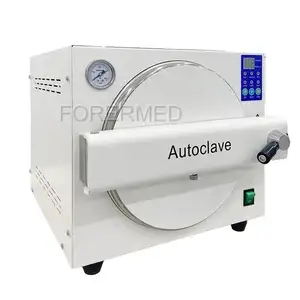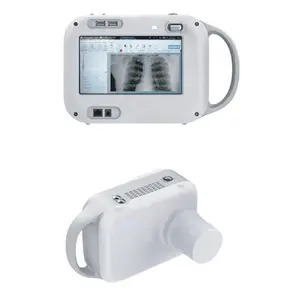Popular in your industry















Related Searches:























Top categories
About tympanic thermometer
A tympanic thermometer is a device engineered for gauging body temperature via the ear canal. It detects the infrared radiation from the tympanic membrane, or eardrum, to swiftly and precisely ascertain a person's core body temperature. Tympanic thermometers have gained traction in medical settings and are increasingly favored for domestic use, particularly in the care of children and the elderly.
Types of Tympanic Thermometers
Among tympanic thermometers, various models are tailored to specific requirements. The Covidien Genius 2 is celebrated for its ease of use and reliable readings, a boon in bustling medical environments. Conversely, the Genius 3 tympanic thermometer is acclaimed for its cutting-edge infrared technology and heightened precision, essential in scenarios where exactitude is critical. For pediatric applications, thermometers with diminutive probes and features such as rapid read times and pliable tips are preferred to ensure a child's comfort and compliance. In contrast, home models emphasize user-friendliness, boasting large displays and straightforward button configurations.
Structure and Operation of Tympanic Thermometers
The tympanic thermometer boasts a cleverly compact and efficient design. Its probe, which contains the infrared sensor that captures the eardrum's warmth, is at the heart of the device. This sensor is intricately connected to a microprocessor that interprets the temperature data and displays it on an LCD screen. Models like the Welch Allyn tympanic thermometer include additional features such as a probe cover ejector, which aids in maintaining hygiene by enabling users to discard used covers without touching them. Moreover, some high-end models come with technology that mitigates the influence of ambient temperatures, ensuring that readings remain unaffected by external conditions.
Materials and Benefits
The selection of materials for constructing tympanic thermometers is vital for safety, durability, and functionality. The medical-grade plastic of the outer shell provides a robust yet light framework, while hypoallergenic materials at the probe tip offer patient comfort and prevent allergic reactions. These materials are also chemical-resistant, facilitating straightforward sterilization. The employment of advanced plastics and composites enhances the device's durability, securing its status as a dependable instrument for repeated temperature assessments.
Business Usages and Applications
Tympanic thermometers have become indispensable in various professional applications due to their swift and non-invasive nature. In hospitals, they are integral to routine patient evaluations and pre-surgical preparations. Clinics employ them in triage to expediently gauge patient conditions. For occupational health practitioners in industrial environments, they are essential for monitoring employees at risk of heat-related ailments. The simplicity and quick turnaround of tympanic thermometers render them an invaluable asset in any setting where health surveillance is essential.
Functions of Tympanic Thermometers
The principal role of a tympanic thermometer is to measure the infrared radiation from the tympanic membrane for an accurate body temperature reading. Additionally, many tympanic thermometers incorporate features such as memory recall, enabling the tracking of temperature fluctuations over time, and fever indicators that offer instant visual signals for elevated temperatures. These functionalities prove especially beneficial in medical contexts for tracking a patient's health trajectory or convalescence.
Features of Tympanic Thermometers
Salient features of tympanic thermometers encompass their ability to measure temperatures rapidly, often within seconds. Numerous devices are designed with user-centric interfaces, including large, legible displays and straightforward, intuitive controls. Thermometers like the Braun tympanic thermometer provide additional comfort with pre-warmed tips to lessen the discomfort of a cold instrument, a feature that is particularly comforting when measuring a child's temperature. The integration of smart technology in certain models facilitates connectivity with health applications, allowing users to manage and monitor their health data over time.
Benefits of Using Tympanic Thermometers
The advantages of employing a tympanic thermometer are multifaceted. They offer a rapid, precise, and non-intrusive means of temperature measurement, which is less distressing for patients than traditional methods such as oral or rectal thermometers. This is especially beneficial for children, the elderly, or individuals with disabilities. The non-contact nature of the measurement also lowers the risk of cross-contamination, a significant concern in medical environments. Additionally, the efficiency and speed of tympanic thermometers in obtaining temperature readings enhance healthcare efficiency, fostering improved patient management and care.
How to Use a Tympanic Thermometer?
To secure an accurate reading with a tympanic thermometer, correct positioning within the ear canal is crucial. By pulling the ear back to straighten the canal, insert the thermometer gently until it fits snugly, ensuring the sensor is directed at the eardrum. Activate the reading with a button press and await the beep or signal that denotes completion of the measurement. Adhering to the specific guidelines provided by the thermometer's manufacturer is important, as improper usage can result in inaccurate readings.
How to Choose the Right Tympanic Thermometer?
Selecting an appropriate tympanic thermometer entails evaluating several aspects. In clinical contexts, precision and measurement speed are of utmost importance, with devices like the Genius 3 tympanic thermometer being preferred for their established reliability. For personal use, factors such as operational simplicity and features like fever alerts or memory capabilities may take precedence. The availability of after-sales service and manufacturer support should also be taken into account.
How to Clean and Maintain Your Tympanic Thermometer?
Meticulous cleaning and maintenance are imperative to preserve the accuracy and lifespan of your tympanic thermometer. Post-use, the probe ought to be sanitized with an alcohol wipe to eliminate earwax or debris and prevent infection. If the device utilizes disposable tympanic probe covers, they should be replaced after each patient. Regular battery checks and replacements are necessary to maintain readiness for use. Storing the thermometer in a protective case when not in use will avert damage and maintain cleanliness.
What are the advantages of using a tympanic thermometer over other types?
Advantages of a tympanic thermometer over alternative thermometry methods include its expedited measurement process, user-friendliness, and reduced patient discomfort. Tympanic thermometers avoid contact with mucous membranes, unlike oral or rectal thermometers, thereby diminishing infection transmission risks. They are also less susceptible to external variables such as ambient temperature or recent food and drink consumption, which can affect oral temperature readings.
Are tympanic thermometers suitable for all age groups?
Tympanic thermometers are appropriate for individuals of all ages, from infants to the elderly. Nonetheless, the accuracy of the reading may be contingent on correct thermometer placement in the ear canal, which can differ in size and shape among various age groups. It is crucial to use an age-appropriate thermometer and adhere to the manufacturer's usage instructions.
How does a tympanic thermometer ensure accurate readings?
To guarantee precise readings, a tympanic thermometer is outfitted with a sensitive infrared sensor that accurately captures the eardrum's emitted heat. Many models are equipped with sophisticated calibration technologies to sustain accuracy over time. Certain thermometers also offer feedback systems, such as the Welch Allyn tympanic thermometer, which includes a positioning system that confirms correct device alignment in the ear for an accurate reading.

















